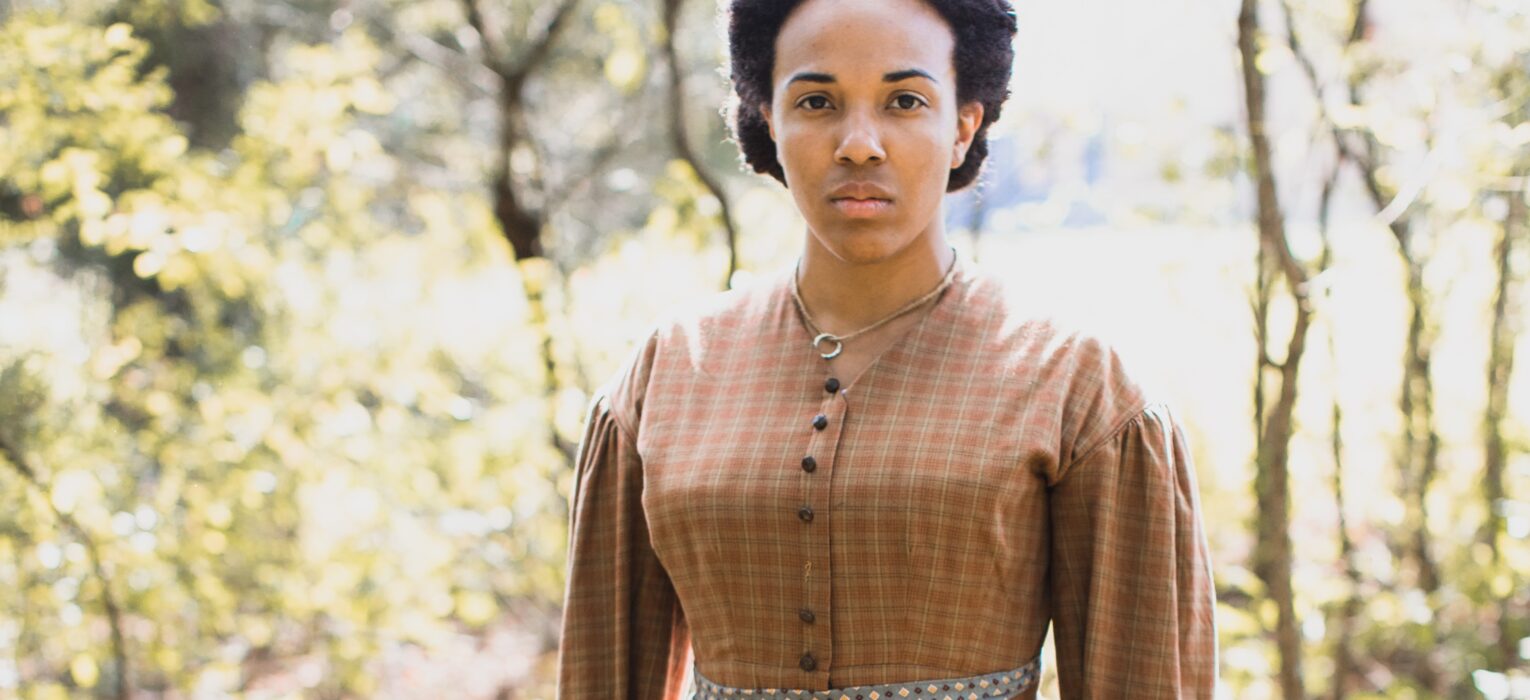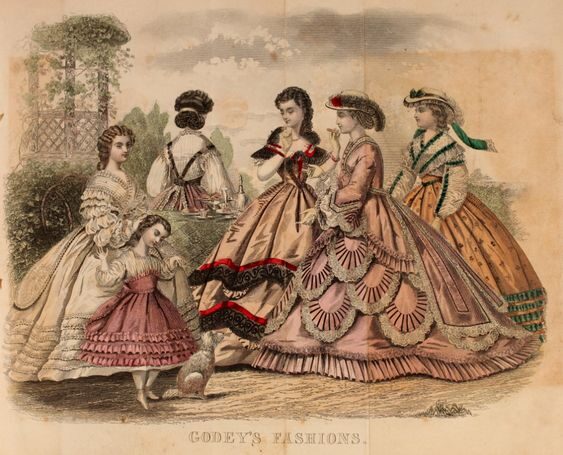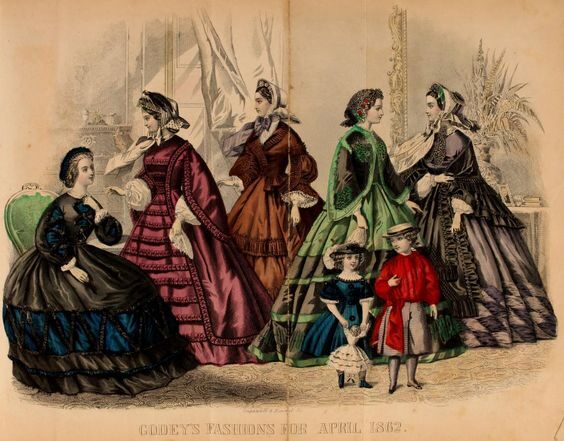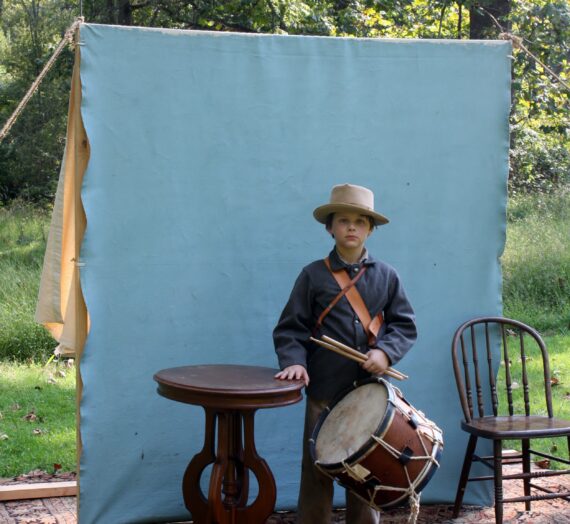In the early summer of 2017, I was commissioned by director Walcene Metayer and costume designer Rebecca Joy Lewis to create an authentic dress for the Civil War Era film The Fighting Road.
It was a dream come true to create a costume piece for a historic drama and to work with such uniquely creative people. Throughout the process – from picking the style of the dress, to selecting the fabric, and even buttons, Walcene and Rebecca were amazing to work with!
The dress for this movie was made using techniques which are true to the Civil War period. Hours of labor went into finishes which would visually transport the viewer back to the 1860’s. From tiny piping between the shoulder and sleeve seam, to hand-gathered pleats in the skirt waist and a hand-finished, 180″ circumference hem, no authentic detail was spared. The 8 yards of rust red and khaki fabric were 100 percent homespun cotton.
In the story, Charlotte Rose (the character I designed for) is a freed slave, so the director and designer wanted her to wear a working-class dress. Naturally, this meant that we would avoid fabrics like silk and lace, and choose more practical textiles of the era such as plain woolens and woven cottons, which were durable for working in and around the home.
Like a real working-class Victorian woman, we decided Charlotte would not be wearing a cumbersome hoopskirt, so often associated with typical Civil War Era fashion. The large hoop would get in the way of her daily household responsibilities. Instead, we knew she would opt for something more practical to fill out her skirts – a corded petticoat (a cotton underskirt which has rows of cord sewn between two layers of fabric.)
Here is the beautiful Aviana Metayer as Charlotte.


If you would like to find out more about this amazing project, please go to their website or visit them on their Facebook page.
Close-up photos of the dress



A curved seam detail in the back, used during the 1860’s to visually make the waist appear smaller.

Front detail of waistband and cartridge pleating

Back detail of curved seam and cartridge pleating

Construction pictures:
Bodice:
Front of bodice – darts have been sewn in fabric and lining, then both are basted together:


The lining is brown polished cotton, often used in original gowns of the era.
Back of bodice:


A curved seam detail, achieved by sewing a running stich through both layers of fabric.

On the right side, the fabric is then creased over the running stich, just enough to hide it.

Finally, the creased line is sewn down with a tiny row of back stiches.

Skirt:

Cartridge pleats are created by making two rows of evenly spaced stiches

Gathers are pulled together to create tight pleats

Each pleat is sewn directly to a cotton tape which will be hidden by the waistband
Oh…and…yes! The apron was made by me, too








Robin Kirkegaard
Thank you so very much for the inside view of the garments and the process. Those of us with to little space or funds seldom get to see the methods of construction, and sadly, there are no Grandmothers to fill in the gaps in period sewing books.
I do have an logistical question. If the bodice and skirt are separate pieces, how does a lady, especially one who must work, and may not have a “proper” corset bend over without her dress gaping in the back. Or if she mixes and matches skirts, and bodices, must she sew them together each time?
Thank you for your lovely website
SewDecadesAgo
Thank you so much for visiting my website and for taking time to ask questions! As a rule, it was more practical to sew the bodice and skirt together – the skirt would be sewn onto a band and then attached to the bodice (like I did in the above dress), or the bottom of the bodice would be finished with piping and the skirt would be sewn directly to it. Some silk dresses were made as multiple pieces out of one fabric. One skirt (which was easy to make, but required more fabric) could have more than one bodice made for different occasions. This was an easy way for a lady to go from a day to evening function simply by changing out bodices. And yes, they would have basted the bodice and skirt together – this really wasn’t as big of a deal to them as it might seem to us, and it would only take them a few minutes of time
Robin Kirkegaard
Thank you for your reply, and yes, as someone who still does hems, buttons, and picked zippers by hand, I wouldn’t consider it unusual to baste on a skirt.
Since period sewing books assume you don’t need to know the basics, it can be hard to tell what those basics were from bad web pictures, so thank you for picking the real things apart and showing those details to the rest of us.
Siena Baillie
Do you have a pattern or one you recommend to make this style bodice?
SewDecadesAgo
Yes, the bodice pattern I used for this dress is the fitted bodice pattern from Past Patterns. You can go directly to their website and order it. The other one I like to use from them is the gathered bodice. Both are fairly correct for the 1860s. I think Truly Victorian might have Civil War era patterns as well, although I have never used them and can’t be sure how well they come together.